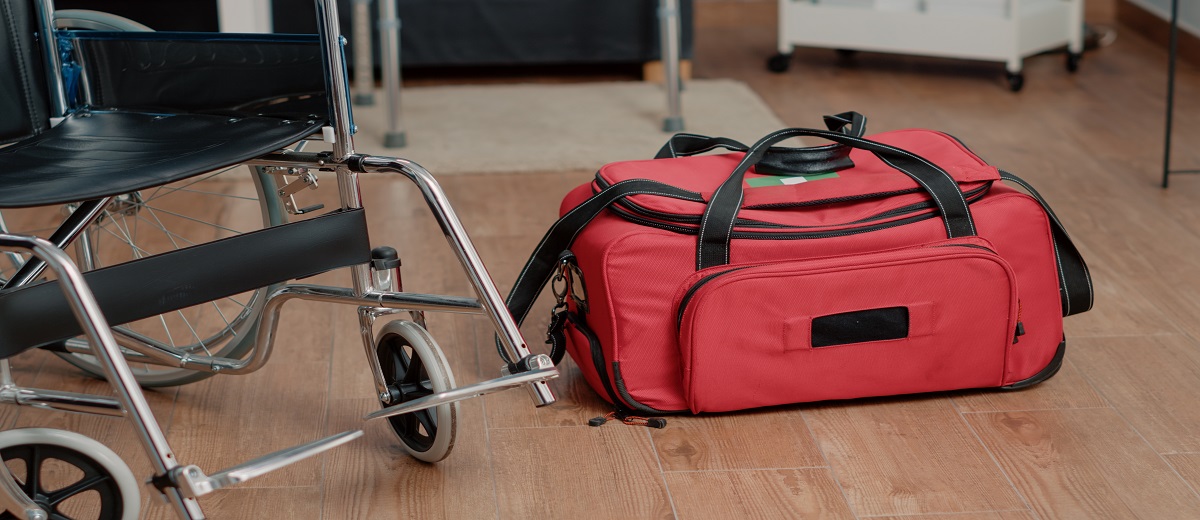Watch our video on what we stocked in our 2022 School Nurse Go-Bag Here and shop the School Nurse Go-Bag Shopping List Here.
Emergency management in schools involves mitigation, planning, response, and recovery. Through all aspects, the school nurse plays a pivotal role in health emergency preparation and response. An important component of planning is to ensure that essential emergency supplies are stocked, readily available, and easily accessible in the event of an emergency or disaster. Based on the specific needs of the local school community, the school nurse should identify both general and distinct emergency preparedness needs for students with particular health concerns, in addition to the necessary equipment and supplies required to appropriately respond, assess, and provide interventions to acute situations at school.
Emergency Bag
A “Go Bag” should be packed with sufficient supplies for emergency triage and response. It is helpful to have something on wheels for easy transport and to keep bleeding control kits stocked with AEDs throughout the building. The National Association of School Nurses has compiled a list of minimum supply standards for emergency preparedness and “Go Bags” and, as a critical component of developing health emergency plans, supply availability, as well as personnel (a school nurse may not always be present), must be carefully considered.
If all this emergency talk is making you feel unprepared, sign up for an Emergency Nursing Pediatric Course or check out great resources like this one from Lurie Children's Hospital in Chicago.
Routine Bag
For those non-emergent needs outside the health office, it can be convenient to provide first aid kits for field trips and recess bags, as well as to classrooms, if it is in line with your school or district’s policies. A small bag filled with bandaids, petroleum jelly, safety pins (for all those clothing emergencies!), and tooth boxes, can go a long way in keeping kids in class and maximizing their learning experience. Regardless of any formal training, a small first aid guide can be a quick and valuable resource for anyone responding to a medical situation and is always useful to include in any first aid kit or supply bag.
The number of urgent health-related conditions in schools is rapidly rising, as are overall visits to school nurses (already busy) offices. Planning for the unexpected, whether emergent or not, should be a priority. Ensuring availability and accessibility of essential supplies and resources is simply one part of planning, but it is an integral component of keeping school communities safe and kids healthy and ready to learn.





